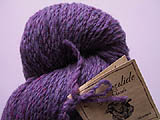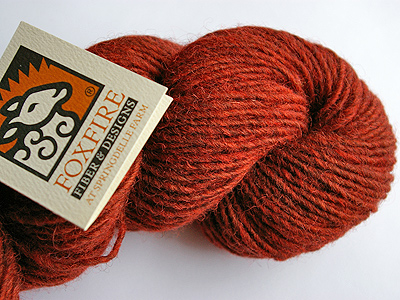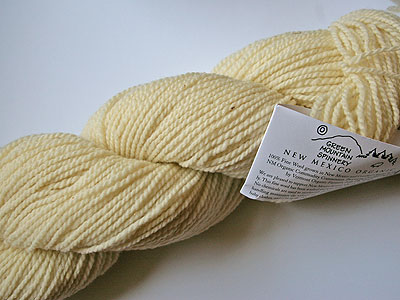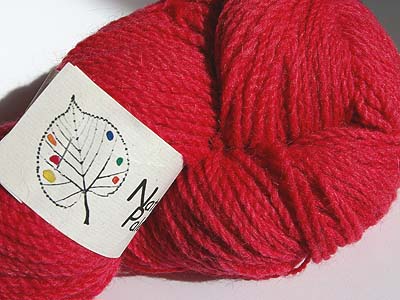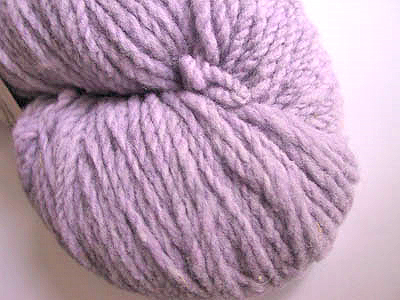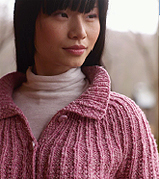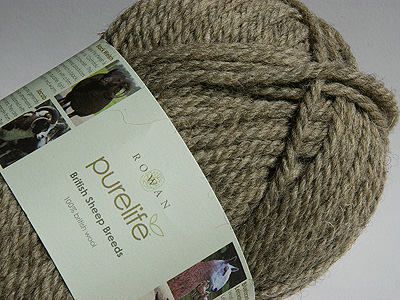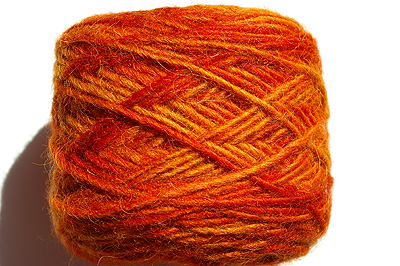Nine Wool Yarns that Launched a Book

Why wool? | Woolalong on Ravelry | Errata | Clara's books
Pattern downloads (PDFs): Hill Country Hat, Cuff-to-Cuff Pullover

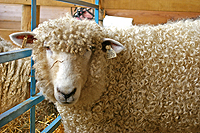
For nearly two years I've been working on a 207-page love letter to wool. On October 13th, The Knitter's Book of Wool makes its official debut. The book is based upon a lifetime of wool wearing and more than a decade of professional (and passionate) wool spinning, swatching, sniffing, rubbing, and observing.
I have loved many wool yarns over the years. I am partial to wool because of its infinite flexibility, warmth, diversity, and eagerness to accommodate my every whim. I also love wool because it so often tells a deeper story about a farmer, a mill, and a dream.
I do not—I cannot—play favorites, because so many magical wool yarns exist. But nine yarns in particular deserve your extra attention today. I've reviewed them in the past, and they played a great part in my inspiration to pursue a whole book about wool. While only five of these yarns were featured in the book's patterns, they are all part of its spirit.
Beaverslide Dry GoodsI still remember how my yarn smelled faintly of flowers when I first pulled it out of its box. Beaverslide Dry Goods is a family-run ranch that raises Rambouillet/Merino sheep. The animals graze on 3,000 acres along Montana's Rocky Mountain Front. Their plush, delicate finewool fibers are shorn and sent to Alberta, Canada, where they are gently washed, processed, and spun on an antique spinning mule. The resulting yarn is a joy to work with and to wear. Elsa Wool Company
Oh Elsa, sweet Elsa, how I love your yarns. I first stumbled upon these yarns at La Lana Wools in Taos, New Mexico, where several pure white pearly skeins were resting in a simple wooden bowl. The next day at the Taos Wool Festival I discovered a whole booth of Elsa, and my life has never been the same.
These yarns come from Elsa's own Cormo sheep, which she breeds in Colorado. The fibers are soft and vibrant, producing a yarn that conveys all that is good about wool—regardless of whether you choose the worsted- or woolen-spun versions.
I used the woolen-spun version for the Sweet Fern fingerless mitts in my book. And I've been known to carry a snippet of this yarn in my pocket for good luck.
Foxfire Fiber and DesignsNo matter how hard she tries to paint a realistic picture of what it's like to be a "sheepgal" (the name of her blog), Barbara Parry can't help it: her thoughtful words and evocative pictures make it all look gloriously inviting.
Her yarns are equally thoughtful and inviting. I've had my way with her Cormo Alpaca Classic and Upland Wool and Alpaca, and designer Shelia January had her way with Barbara's Cormo Silk Alpaca for the Nara Scarf in my book. Her yarns can vary from year to year, but they all have similarly calming, purr-inducing effects.
![]() Read the full review of Upland Wool and Alpaca
Read the full review of Upland Wool and Alpaca
All of Green Mountain Spinnery's yarns are lively and inspiring, being sourced from area sheep farms and minimally processed. But this one in particular—which falls in the RIP category—was something special. I include it here as a fitting example of how every skein really can tell a story.
Wait, wait, wait! This yarn is not in the RIP category. It is still very much alive and well in the Green Mountain Spinnery line-up. I am very happily corrected...and relieved. What can I say? Read the review. It's a fantastic yarn.
Nature's Palette Green Sheep Columbia WorstedThe name has changed ever so slightly since I first reviewed it in 2007, but the yarn itself is still as plump, pure, and colorful as ever.
Made from the fibers of Columbia sheep that are USDA Organic Certified, the yarn is mulespun in Canada under the Canadian Organic Standard and masterfully plant-dyed by Darlene Hayes of Nature's Palette.
What's this Columbia business? Well, the Columbia sheep breed was developed in the U.S. in the early 20th century. In crossing finewool Rambouillet ewes and sturdy Lincoln longwool rams, the breeders' goal was a hearty sheep that would thrive in the western rangelands of the U.S., carry lots of juicy meat on its frame, and grow a dense, heavy fleece.
It's a wonderful all-purpose wool that is warm, durable, and yet still relatively soft to the touch—the kind of wool you want to wear each morning when you go downstairs to make your first cup of tea. And that's exactly what Pam Allen envisioned when she used this yarn for the Comfy Cardigan in my book.
Imperial Stock RanchSpeaking of Columbia sheep, this ranch is one of the places where the breed got its start. More than 125 years later, the ranch has been declared a National Historic District.
And the yarn? Lovely.
It, too, has been sent to the same mulespinner in Alberta, Canada, for gentle processing and spinning. The mulespinning process is ideal for these kinds of fibers because it more closely replicates the movements of the handspinner, allowing for greater bounce and life to remain in the yarn.
Best of all, since I first reviewed Imperial Stock Ranch in 2003, the company has made significant forays into the wholesale market. Which means that your chances of getting to see and touch this yarn for yourself have never been better.
Marr Haven Farm"Just when I think I've experienced my last yarn-related surprise, a new yarn arrives and hits me over the head like a ton of bricks." Those words from 2002 still ring true today. Which is why I asked Sandi Rosner to design a cardigan with this yarn, why I named it the Allegan Cardigan (in honor of Marr Haven's hometown, Allegan, Michigan), and why that sweater and I have since become inseparable.
This jumbled, doughy yarn comes from the Marr Haven flock of Merino/Rambouillet sheep. The wool is fine with a magnificent crimp that, when spun woolen on a mulespinner, results in an extraordinarily chaotic and spongy yarn with irresistible tactile appeal. Of all the yarns here, Marr Haven may well be the most minimally processed. Its rich scent of lanolin is, for those who enjoy the fragrance anyway, simply intoxicating.
Rowan Purelife British Sheep BreedsIn 2008, Rowan Yarns did something really exciting. The company bucked the current trend toward super-soft imports and produced a truly British yarn made from the fibers of four notable British breeds: the Bluefaced Leicester, Jacob, Black Welsh, and Suffolk.
These are full-bodied yarns, the knitterly equivalent of a hearty rye bread. They create warm, well-wearing garments that may prefer a little buffer between themselves and your skin—although this may vary depending on you.
Technically speaking, the yarn is so well constructed that it almost knits itself. And it's a fantastic, accessible introduction to the world of wool. If you're just dipping your toes into the "everything besides Merino" waters, begin with the Bluefaced Leicester and have fun. I included a simple hat pattern in my book to get you started.
Wellspring Woolens Poppi's WorstedWe end with another beautiful example of how each skein tells a story—and sometimes more. This yarn tells of a woman named Melinda Kjarum, who raises a small flock of Icelandic sheep on the banks of the Minnesota River at her farm, Wellspring Woolens.
Icelandic sheep are among the few sheep breeds that haven't been excessively meddled with by humans over the years. Only one recorded attempt was made to improve the breed, and the results were so catastrophic that all the offspring were culled and the importation of any sheep to Iceland was declared illegal.
Which means what you see today—or what Melinda sees each morning when she goes out to check on her flock—is pretty close to what first arrived on those Viking ships more than 1,100 years ago. The animal grows a dual-coat of fibers that is tricky to process, easy to harm, but pure magic when it's done right. And Poppi's Worsted is definitely done right.



